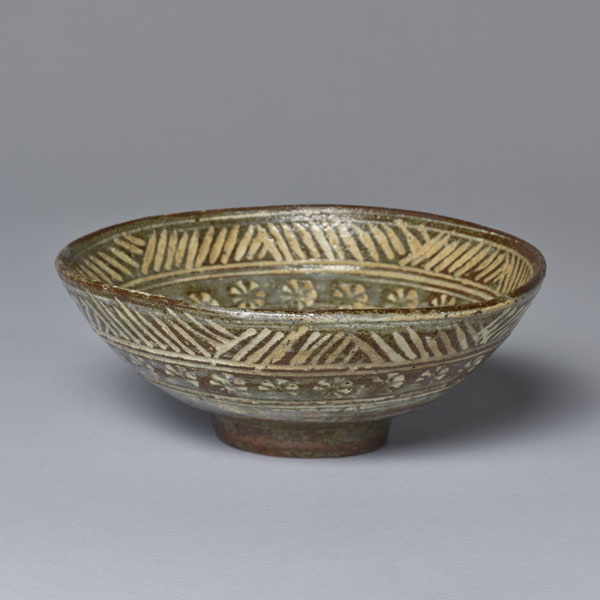Tea Ceremony
-

Tea Bowl, Named Kimura, Korea, Joseon dynasty, 16th–17th century, Gift of Mr. Hirota Matsushige
Japanese Gallery (Honkan) Room 4
May 20, 2025 (Tue) - August 17, 2025 (Sun)Tea drinking and its role in society changed over time. In the 12th century, Zen monks introduced a new kind of tea drinking from China: green tea was ground into a powder and mixed with hot water. Monks drank this tea as a medicine and to stay awake during meditation.
Before long, the samurai also began to drink tea and competed for prizes in blind tasting competitions. In the 14th and 15th centuries, the elite samurai who ruled Japan focused on the aesthetics of tea drinking. They collected valuable Chinese works like paintings and tea bowls, displaying and using them during tea gatherings.
A century later, Sen no Rikyū (1522–91) established the foundations of the tea ceremony. When serving tea, he used valuable Chinese works together with simple utensils. He also stressed humility and the beauty of imperfection. Elite samurai practiced his style and its variations as a social, aesthetic, and spiritual pursuit.
| Designation | Name | Creation/ Excavation/ Provenance |
Period | Acquisition/ Ownership/ Accession Number |
CMT | ||
| Highlight | Calligraphy in One Line | By Musō Soseki (1275–1351) | Nanbokuchō period, 14th century | Gift of Mrs. Yamamoto Tomiko and Mr. Yamamoto Kenji, B-3073 | On exhibit through July 6, 2025 | ||
| Highlight | Tea Bowl, Named "Kimura" | Korea | Joseon dynasty, 16th–17th century | Gift of Mr. Hirota Matsushige, TG-2705 | |||
| Tea Bowl, Named "Kanoko Madara (Fawn Speckles)" | By Ichinyū (1640–96) | Edo period, 17th century | Gift of Mr. Hirota Matsushige, G-5340 | ||||
| Bowls | Jingdezhen ware, China | Ming dynasty, 16th century | TG-2177 |
